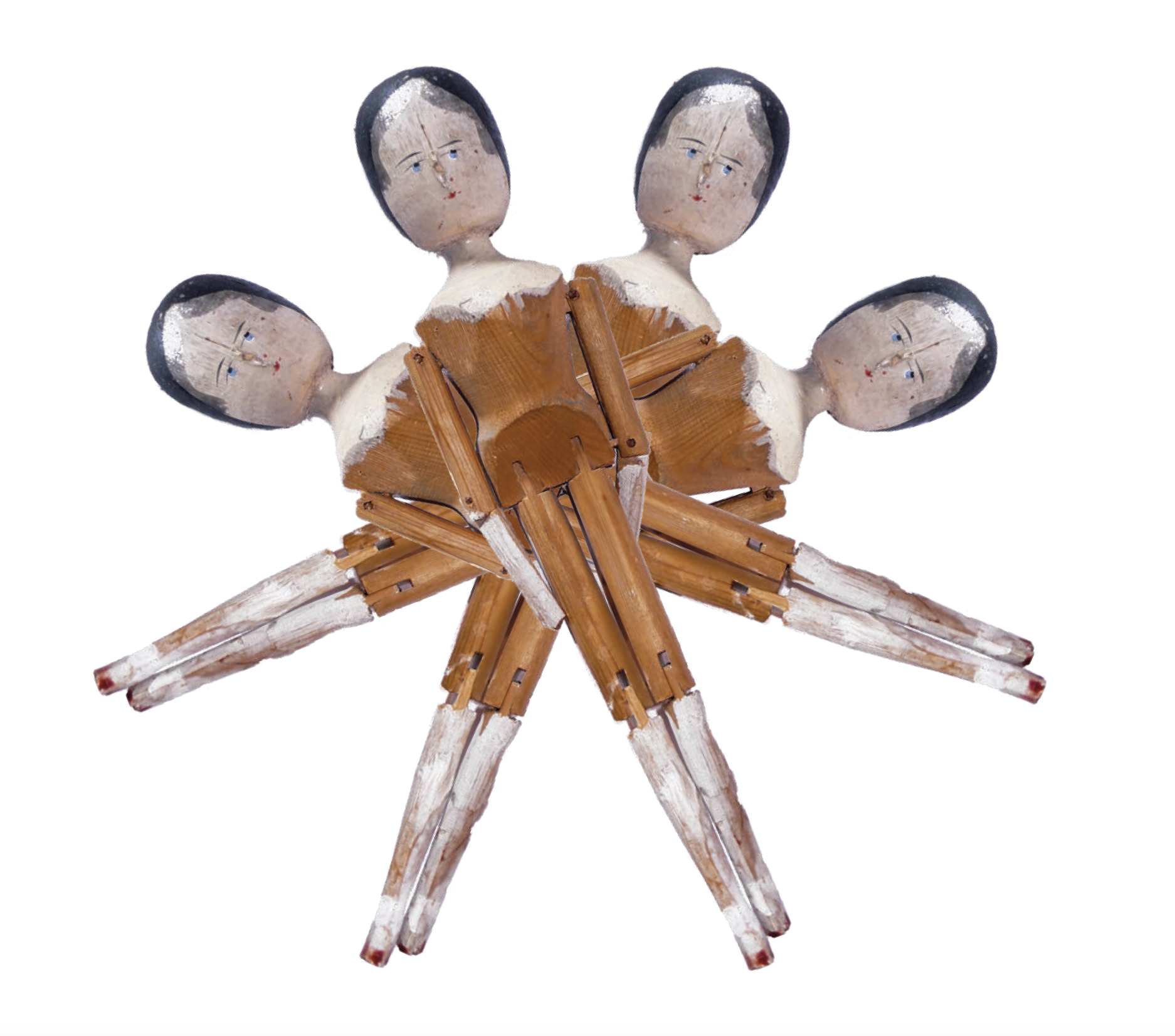
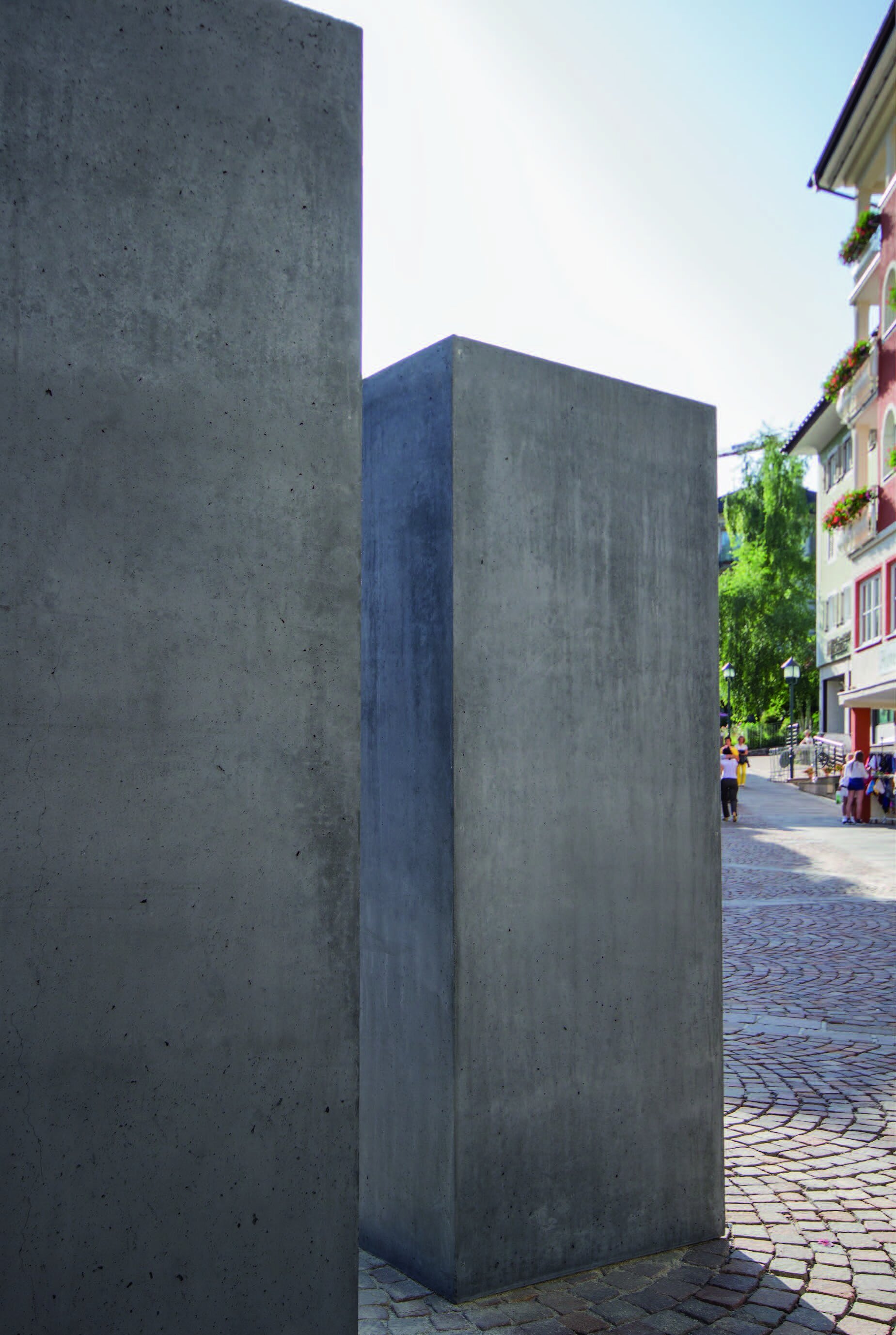
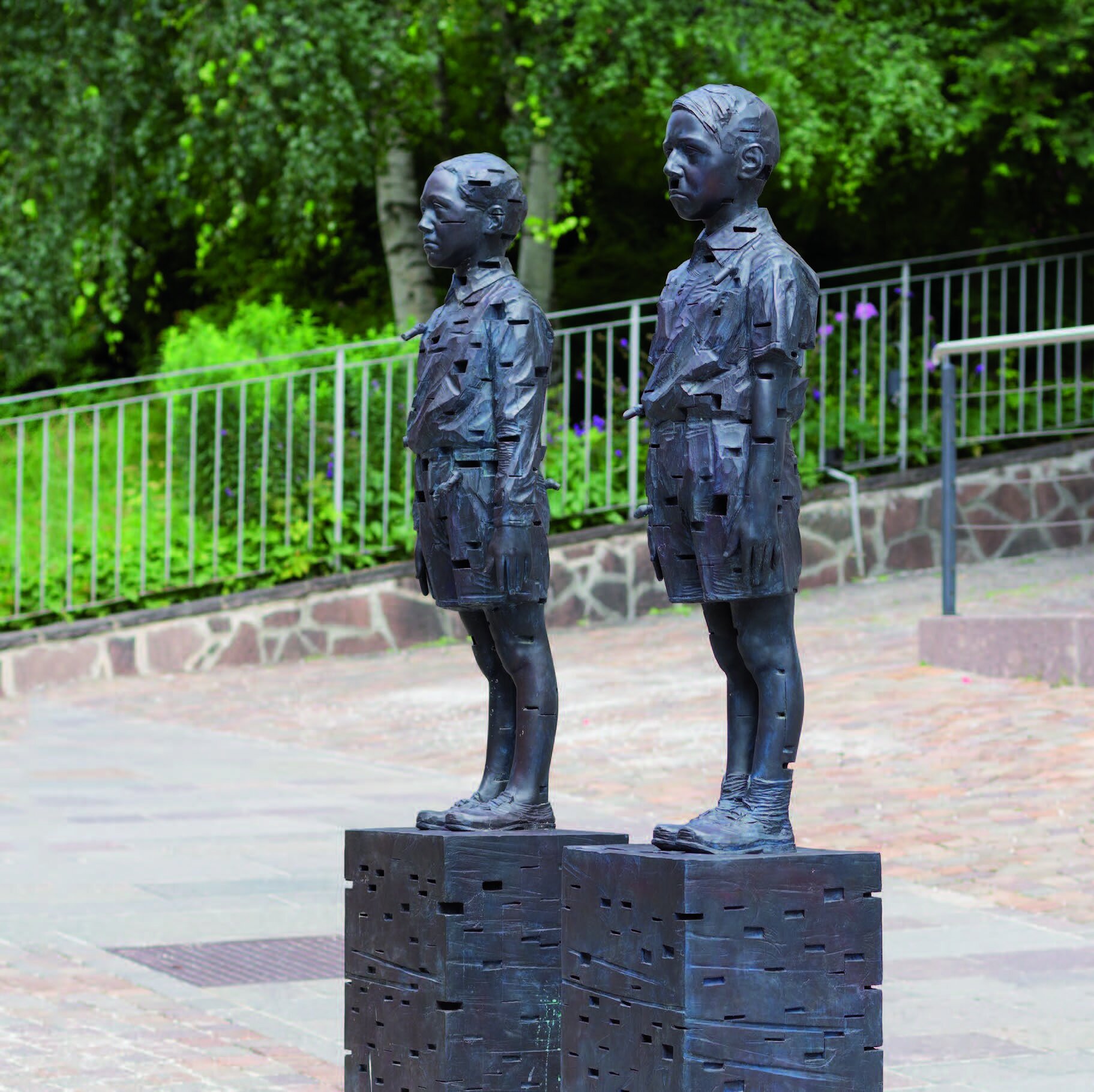
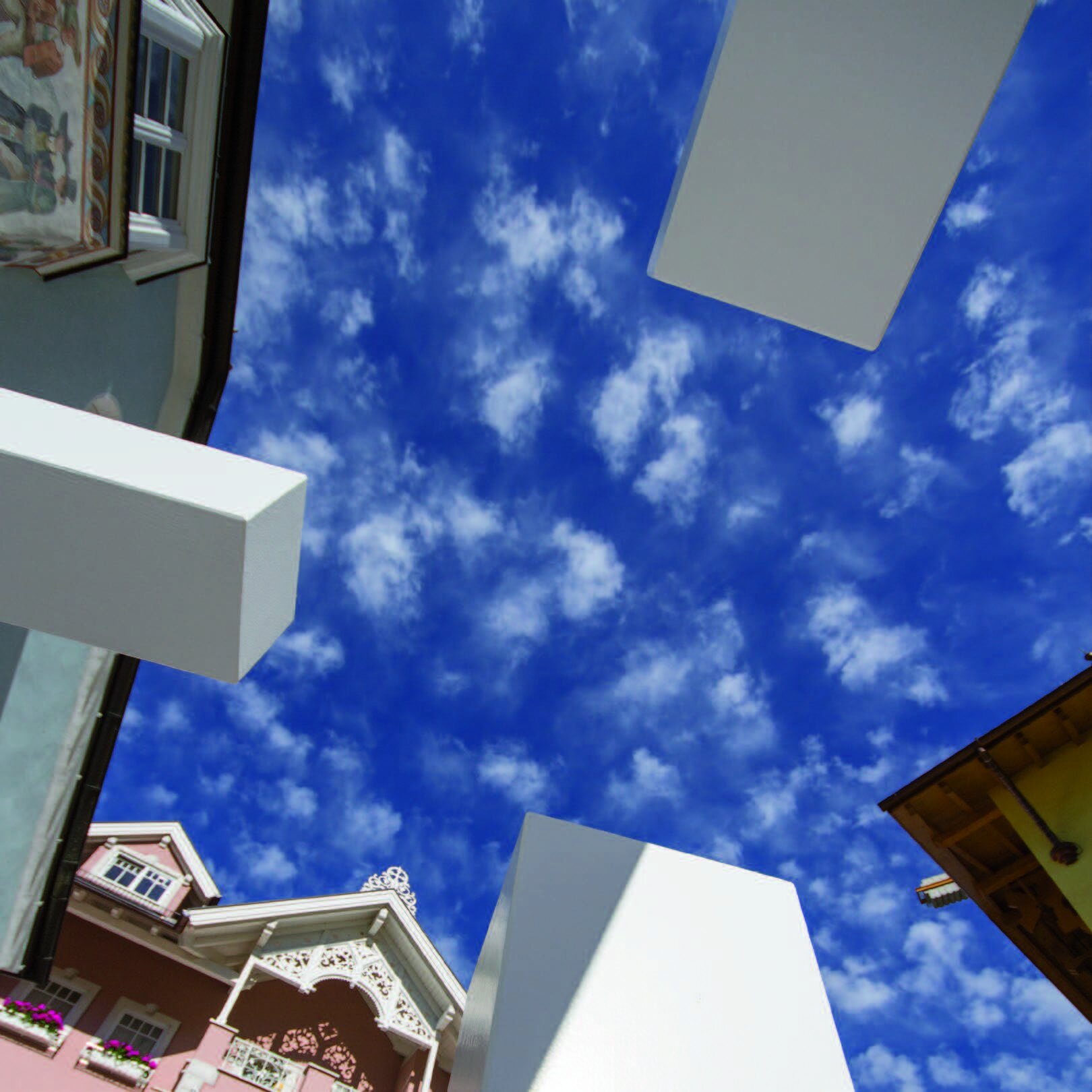
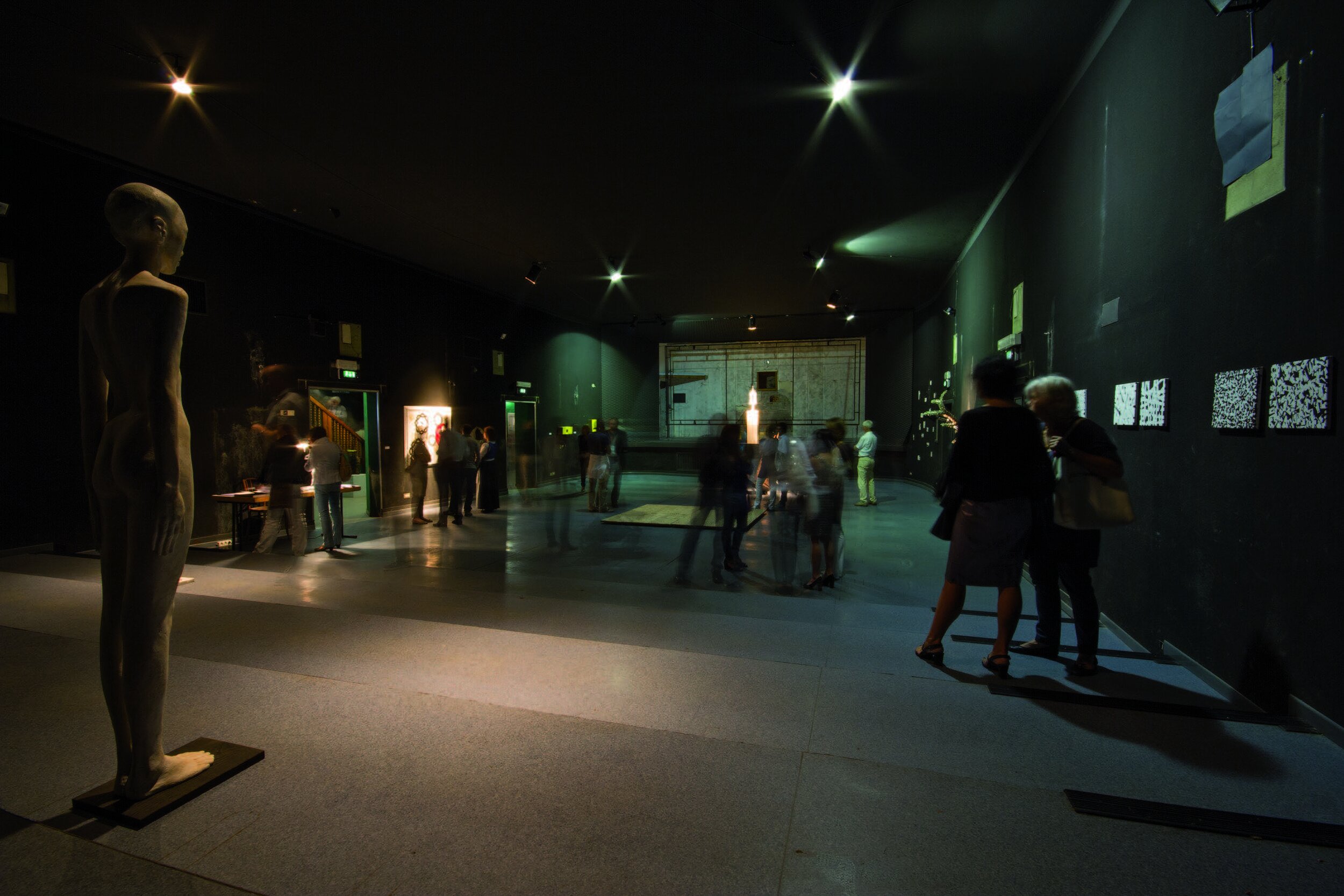
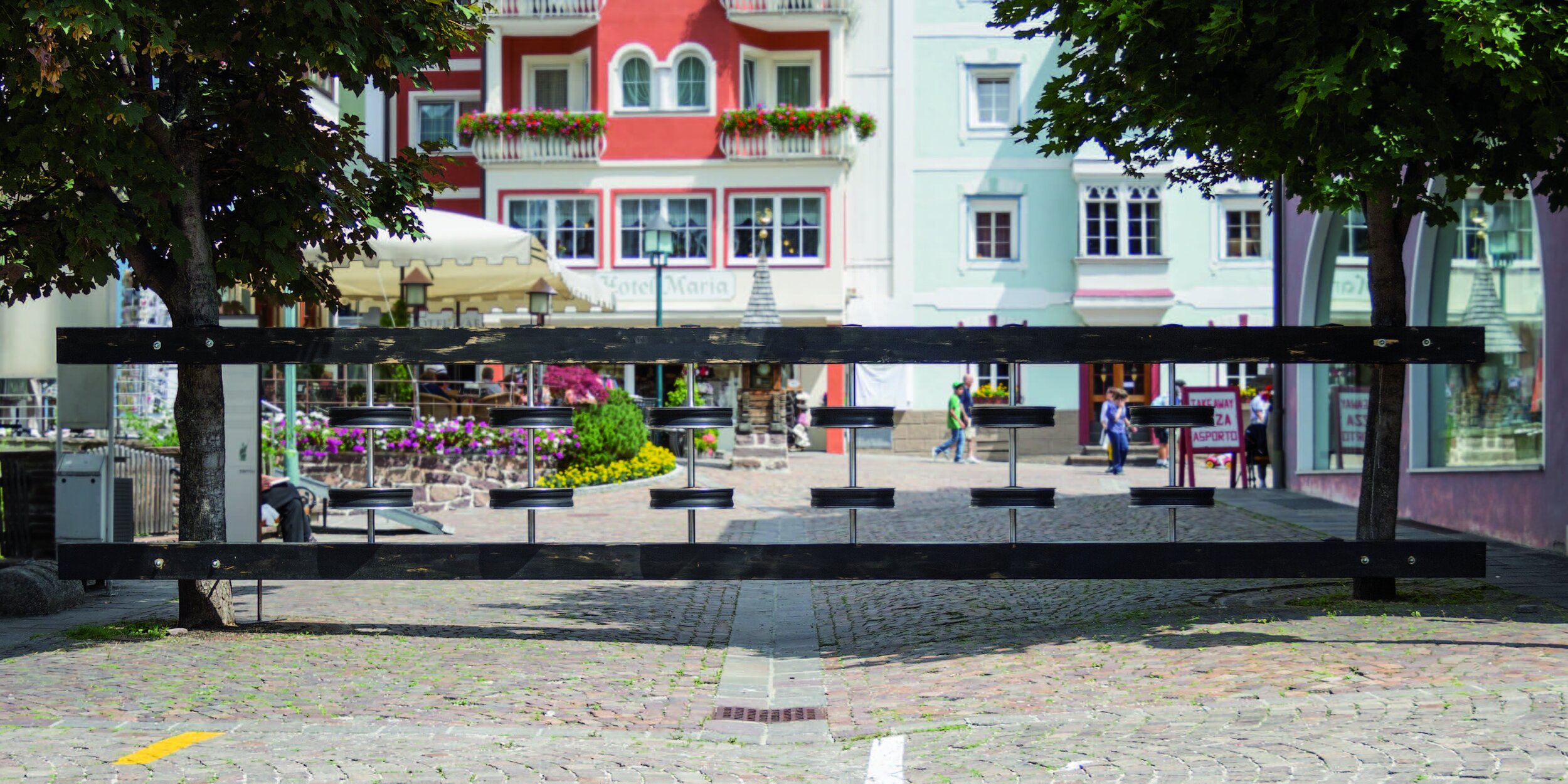

Biennale
Gherdëina III
Concept
Art in the public interest - Contemporary sculptures in the pedestrian zone of Ortisei
"Sculpture does not desire to exist independently of the viewer, as if it were given from the beginning, ready and waiting to be taken away (...). The sculpture waits for the intuition, the subjectivity and the arbitrariness of the creative viewer, who is invited to fill its vacancy, as if to believe that everything depends on us, that we are everything and that it is nothing. Silent, non-authoritarian, without anecdotal chatter and without prompting, this work is open to the viewing subject who will reveal it. As a deferred and latent word, it depends on being spoken."
Rémy Zaugg, The Cunning of Innocence.
The Perception of a Sculpture, 1982
A plea for art in public space This year, the Biennale Gherdëina is taking place in the pedestrian zone of Ortisei for the third time. Since 2008 - at that time as a supporting event for "Manifesta" - the Biennale has been dealing with the ambivalent relationship between art and the public. Every two years it presents works by five renowned South Tyrolean artists in order to make contemporary art familiar to a broader section of the population and to confront residents and guests with artistic questions.
Choosing the public space for a contemporary art project is always a special challenge. Many people come into contact with contemporary art here for the first time. The sculptural works are therefore not primarily aimed at an audience familiar with a contemporary art discourse. It is undeniably a big difference whether art is shown in a museum or in public space. A museum of contemporary art is a clearly defined, hermetically aligned space that is deliberately visited to view art. The viewer interested in art knows what to expect. They have the opportunity to prepare themselves for the exhibitions, they can attend an educational programme on site or, after the visit, they can delve into the subject matter with the help of an exhibition catalogue. On the other hand, when contemporary works of art are exhibited in public spaces, they appear in people's everyday lives. They are placed in an unfamiliar environment that is not defined as an art space, and a much larger group of the population comes into contact with them - often unintentionally. This can sometimes lead to conflicts, often also because there is a lack of curiosity and understanding for contemporary art, and art is perceived as a nuisance or even a provocation. Apparently, a very special nerve is struck here, which can sometimes lead to very emotional reactions. Showing contemporary art in the pedestrian zone of Ortisei under this premise is a (daring) courageous step.
Now one can provocatively ask about the meaningfulness of such an undertaking: Why is it not enough for those who are interested in contemporary art to view it in the museum? Why do locals and tourists have to be confronted with enigmatic or even upsetting contemporary artworks in public spaces? The simplicity of the answer may seem surprising: Art is part of being human. And this does not only mean art history - i.e. works of past epochs - but also and especially contemporary art. It is not a crazy luxury good of an intellectual elite. On the contrary. It is a central trait of human beings to express themselves creatively and to be creatively active, to understand themselves and the world in which they live through sensual visual means of representation or even to question them. The engagement with art as an artist, but of course also the experience as an art viewer, does not have to happen in a sheltered workshop, nor should it be reserved for a few people. Museums are important and wonderful places for art (unfortunately, however, often too elitist), but in addition it is of decisive importance that art repeatedly leaves this given institutionalised framework and goes out to the people - for example into the public space. This can arouse curiosity and perhaps even interest in some viewers to visit an art museum, but for others, as mentioned, it can also trigger disturbing irritations. This was already evident this year around the opening of the III Biennale Gherdëina: in addition to numerous enthusiastic reactions, there were also very critical voices, some of which were heard extremely offensively. So as not to be misunderstood: If art leads to discussions, if it is debated passionately, that is only to be welcomed. Sometimes art has to stir things up, provoke and hurt - for example, to address and question unpleasant issues of our time. Not everything has to be liked or perceived as good. It is the right to say: "I don't like that! But when subjective feelings, rejection or offending personal sensitivities are raised to an objective standard, and the removal or even the banning of "such art" is demanded (or the works are denied the character of art altogether), then the discussion is moving on dangerous terrain. In this context, an important question is also directed at politics: to what extent is contemporary art allowed and promoted - even when it expresses itself critically, causes offence and asks unpleasant questions? It says a lot about the openness and also the democracy of a society how it deals with its contemporary artists. What is desirable and worth striving for is an open and honest discussion, an "exposure to the work of art", and not a premature condemnation - even at the risk of having to question oneself and one's own opinion. It is nice that in Ortisei, after the criticisms and expressions of displeasure at the last two biennials (which there were, in addition to the many positive reactions), the courage was found to dare to hold an exhibition in public space again in 2012.
Art in public space has always existed. But contrary to the patterns familiar from the past, sometimes extended into the present - namely mainly monuments, memorials or busts of all kinds - artists today are tackling new thematic fields. These are characterised by a high degree of flexibility, by an abandonment of the elitist concept of art as well as by the realisation that it is not enough to place sculptures from the studio in the open space. Today, the public outdoor space of cities and even villages is often overdetermined and "over-designed". The ubiquitous "buy-me" and "look-at-me" of city centres can lead to today's artists approaching the situation and the claim of art in outdoor space with a critical distance, but at the same time they have to find ways to be noticed at all. When I referred to the social relevance of art in public space as "art in the public interest" in the title, this is a call borrowed from Arlene Raven1 that can form a serious basis for a serious approach to art in non-institutional space. The perception of art in public space is subject to many influences and interests, be it from politics, the media or tourism operators. Here it is indispensable to find a way to allow art its autonomy and freedom and to avoid predefined expressions of opinion. On the part of the organisers and curators, a high degree of sensitivity and a fine sense of approach and mediation are indispensable in this context. And the artists must also be aware of the special location. Visitors should not be overwhelmed by the works, they should be assisted by art mediators, provided with comprehensible information, and guided tours and discussion events should be offered.
I am convinced that the artistic works on display at the III Biennale Gherdëina will give visitors to the pedestrian zone the opportunity to approach contemporary art in a stimulating and multi-layered way. The art production took place on site, all works were created especially for the Biennale. This made it possible to react directly to the village space and to create an exciting dialogue with the people and the surrounding area. The pedestrian zone is a wonderful place to stroll, a place of communication and, of course, of consumption. In this environment, the contemporary artworks are not a disturbance to the busy and social hustle and bustle, nor are they intended to hurt the feelings of passers-by. But they can be perceived as enrichment by the attentive viewer, make him think, confront him with issues of our society and, by shifting the context, enable new perspectives on what is already known or long established. But art can also inspire sensually and visually, make the viewer smile or even touch him. All this can happen if he, if she, if we all have the courage to engage with the works of art.
The expansion of the concept of sculpture "Sculpture is what you bump into when you step back to look at a painting", the artist Barnett Newman once said ironically in the 1950s.2 Newman's intention to place the genre of painting above that of sculpture is reminiscent of the competition between the arts in the Renaissance and the early Baroque period, in which the question of supremacy within the visual arts was fought out above all between painting and sculpture. The dispute was never clearly decided and in today's multimedia art world it has lost its significance. Nevertheless, sculpture has always had a special place in the visual arts. Unlike painting, it deals directly with the body in space and must be conceived from all sides. The generic term sculpture denotes a three-dimensional, body-forming work; synonymous with it are the terms sculpture and sculpture in the broader sense. The specific characteristics are thus three-dimensionality, positioning in space and haptic experience, but in the 20th century the traditional concept of sculpture is broken up and decisively expanded from the artistic side.3
The development of sculpture in the past century is characterised above all by its detachment from the human body.4 While sculpture was for centuries a reflection of human anatomy, it turned away from the principle of the figural at the beginning of the 20th century. In this period, on the one hand, the process of abstraction begins, an expulsion and disintegration of the world of objects into abstract painting and sculpture, and on the other hand, an unprecedented entry of precisely this world of objects into art and an objectification of sculpture. One only has to think of the so-called "readymades" (especially in Marcel Duchamp's work): ordinary objects and industrially produced utilitarian objects are transferred into art and declared to be sculptures.
"It is the unknown quantity from which I start and to which I want to arrive." With this statement about the material experiment, the artist Eva Hesse opened up new paths in sculpture5 in 1968. The materials and media available and used for sculpture expanded radically during this period: unconventional, "non-art" materials were often used, such as various plastics, industrial products and rubber, but also everyday objects, such as clothing or even toys, found their sculptural use and made completely new technical knowledge necessary. Artists experiment with different material and aggregate states (e.g. also with fire and water), they begin to expand the traditional concept of sculpture to include the temporal dimension, to take an interest in making the artistic process visible, as well as the energies at work in the process. Attention shifts from the completed sculpture to what happens during or is triggered by the process, the form of the sculptures is the result of the material properties and the events to which the object has been exposed. Through the influence of film and video, numerous media sculptures are created. Since the 1960s, multimedia forms of sculpture such as performances, installations and environments6 have dominated the development of sculpture. From assemblages and accumulations, large, space-consuming installations develop that make use of all media, from painting to film, from text to object. Parallel to this expansion of the concept of art, it was above all Fluxus, Happening and Action Art in general7 that changed the concept of sculpture. Instructions to the audience invite participation, sometimes only with the construction or operation of the objects (by the visitors) do they become works of art. Some conceptual approaches go even further: a sculpture can be a purely linguistic utterance, a text on the wall or an instruction. It can be a photographic document, an installation or an action, a social sculpture, a social process (e.g. with Joseph Beuys). More recently, artists like Erwin Wurm have been playing with the border area between sculpture, action and performance. For Wurm, everything can become a sculpture: everyday actions, written, photographed or drawn instructions, even a thought. Finally, one more artist should be mentioned: the South Tyrolean Walter Pichler. The exceptional artist, who died only recently, asked himself the question: "Where does sculpture begin? Where does it end?" For his archaic wood or metal sculptures, he built his own houses and homes - dwellings with perfect dimensions and relations so that the works of art would have their ideal place with the optimal lighting conditions. Conclusion
In conclusion, the enormous range of materials, forms, techniques, theoretical approaches and concepts that appear under the term "sculpture" indicate that this discipline is no longer an unchanging art form with fixed boundaries and rules. On the contrary, it is successful because it expands its fields with relentless energy. The expansion of the concept of sculpture that began in the 1960s and 70s (through Joseph Beuys or Fluxus, but also Conceptual Art, Minimal Art and Arte Povera) created fundamentally changed, in some cases completely new conditions and brought a diverse opening in the choice of materials. This is connected with a reflection on the limits as well as the artistic possibilities of the autonomous sculptural work. Sculpture has probably changed more in recent decades than at any other time in its history. "It has changed because we have changed," writes Judith Kollins. "The inventiveness and complexity of the modern world is matched by the inventiveness and complexity of sculpture today. "8
The themes and content of contemporary sculpture are as broad as art itself: Our world and everyday life with all its dimensions, reflection on the basic conditions of art and existential human experiences, but also the conditioning and change of the space played in are reflected in the numerous works. Recently, one can again observe a stronger examination of the human figure as a body in space. And in addition to all the new, experimentally used working materials and forms of expression, the "classical" materials such as bronze, marble or wood can still be found - but they are often combined with a surprising, non-conventional theme.
The expansion of the concept of sculpture opens up new spheres of action, forms of representation and time-specific forms for the medium. "Obviously, scepticism manifests itself here towards an introverted concept of the work that is perceived as hermetic, which is embodied by the 'autonomous sculpture' created exclusively for (...) the museum exhibition space separated from the outside world," Ute Riese emphasises. What is becoming increasingly clear is the need to break up traditional exhibition and marketing mechanisms or to open them up anew. This brings us back to the topic at the beginning of this essay and the desire for more social integration of artworks and social intervention with artistic means. "A new understanding of the artist's role is expressed both in the inclusion of public space, the confrontation with modern urbanity (urban spaces, exposed locations, marginal sideshows), as well as the staging of exemplary communication situations and the inclusion of broader addressee strata that go beyond the specific art audience. "9
The artworks in the pedestrian zone in Ortisei are to be seen in the context of an expanded concept of sculpture. Sculptural work has a long, very successful tradition in Val Gardena, and it is to be welcomed that in art production as well as exhibition activity the step towards contemporary art is being sought. For some years now, in addition to the excellent traditional woodcarvers, there have also been a number of extremely interesting artists whose work is oriented towards the international art scene and who seek to combine their traditional technique with contemporary themes and approaches. The Sculpture Biennale offers a glimpse of artists from the valley but also from elsewhere; their works of art impressively illustrate how diverse and multifaceted (also in South Tyrol) the concept of sculpture is encountered or questioned: Arnold Mario Dall'O combines a raw lath scaffolding with a realistically crafted wooden head in an exciting way, Gehard Demetz grants a psychological introspection with his childlike-looking bronze figures, Hubert Kostner expands sculpture to include utilitarian objects and the participatory moment, Walter Moroder chooses the classic form of the monolith with two concrete blocks, and Esther Stocker influences the perception of space and surrounding space with an unfinished-looking, minimalist cube.
Locals and guests of Ortisei are offered the opportunity for a delightful artistic journey of discovery. "I like the fact that the III Biennale Gherdëina takes place in public space and is thus a gift to everyone," says Esther Stocker. I hope and wish that many see it in a similar way and that the exhibition will be positively received, that it will lead to a lively dialogue and stimulating exchange. A big thank you to the artist and the four artists for their wonderful works but also for the warm and enriching cooperation. I would also like to thank all those who made the Sculpture Biennale possible, especially the artistic director of the Biennale, Ms. Doris Ghetta, because only with people who have such a great passion and a sincere commitment to contemporary art can such projects be realised.
Günther Oberhollenzer
Curator Essl Museum, Klosterneuburg / Vienna
1 Arlene Raven (1944-2006) war eine amerikanische Kunsthistorikerin und Feministin.
2 Barnett Newman, zit. nach: Rosalind E. Krauss, Skulptur im erweiterten Feld (1978), in: Rosalind E. Krauss, Die Originalität der Avantgarde und andere Mythen der Moder-ne, hg. von Herta Wolf, Dresden 2000, S. 337.
3 Fließend sind in diesem Zusammenhang auch die Grenzen zur Installation. Gemeint ist damit ein dreidimensionales Kunstwerk, bei dem der raumgreifende, ortsgebundene oder situationsbezogene Charakter besonders betont wird.
4 Einige Passagen der folgenden Abhandlung sind an einen sehr informativen Aufsatz von Peter Weibel angelehnt. Für Weibel sind „Skulptur, Objekt, Medieninstallation, Handlung“ die vier großen Metamorphosen der Skulptur im 20. Jahrhundert. Peter Weibel, Die Skulptur im 20. Jahrhundert. Zwischen Abstraktion, Gegenstand und Hand-lung, in: Österreichischer Skulpturenpark Privatstiftung (Hg.), Garten der Kunst. Österreichischer Skulpturenpark, Ostfilden 2006, S. 13-26.
5 Eva Hesse zit. nach: Judith P Fischer, different.ways.2.SCULPTURES, Ausstellungskatalog Künstlerlaus Wien und Klagenfurt 2009, S. 3.
6 Das Environment ist ein aus dem englischen entlehnter Begriff und bezeichnet künstlerische Arbeiten, die sich mit der Beziehung zwischen Objekt und Umgebung auseinan-dersetzen. Dabei kann die Umgebung Teil des Kunstwerkes sein.
7 Fluxus und Happening sind wichtige Formen der Aktionskunst. Fluxus ist eine radikale, experimentelle Kunstbewegung in den 1960er Jahren mit Einflüssen aus dem Dadais-mus. Nach dem Dadaismus ist Fluxus der zweite elementare Angriff auf das Kunstwerk, das im herkömmlichen Sinn negiert wird und als bürgerlicher Fetisch gilt. Was zählt, ist die schöpferische Idee. Fluxus ist eng mit Musik, Aktion und Happening verbunden. Happening ist ein improvisiertes Ereignis direkt vor Publikum.
8 Judith Collins, Skulptur heute, Berlin 2008, S. 6. Es soll hier allerdings auch erwähnt werden, dass die Erweiterung des Skulpturenbegriffes durchaus auch kritisch gesehen werden kann. So prangert etwa Robert Fleck die „Zersplitterung des Skulpturenbegriffes“ an, die es unmöglich machen würde, die Geschichte und Entwicklung der Skulptur im 20. Jahrhundert zusammenfassend darzustellen. Robert Fleck, Die Erinnerung der Skulptur, in: Figur / Skulptur, Ausstellungskatalog Essl Museum, Klosterneuburg / Wien, 2005, S. 22-27, hier S. 25.
9 Ute Rise, Skulptur 2000, Ausstellungskatalog Kunsthalle Wilhelmshaven, Wilhelmshaven 2000, S. 4.
